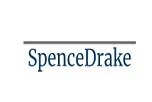Pursuant to subsection 118(1) of the Income Tax Act, RSC 1985, c 1 (5th Supp), if a taxpayer donates to an eligible charity, a tax credit can be claimed for the amount of the donation. However, there have been many widely marketed charitable donation tax shelters that in some form or another have been found to abuse the tax credit. Most involve inflated donations, by a large number of sometimes unwitting taxpayers, to otherwise defunct charities.
Charitable donation tax shelters come in multiple forms. Some involve the gift of items with an inflated valuation, for instance comic books. The comics are valued higher than the purchase price and donated to an organization with charitable status, one which the promoters directly or indirectly control. The donation tax credit claimed is matched to the inflated value. Others, as in the case of Crane v. The King, 2022 TCC 115 (CanLII) (Crane), are more complicated and a leveraged donation is used to inflate the actual amount donated. This is achieved by the use of what is referred to as a limited recourse debt.
According to the Canada Revenue Agency ("CRA"), not a single gifting tax shelter scheme has been held to be in compliance with the Income Tax Act, RSC 1985, c 1 (5th Supp). In fact, if CRA and/or the courts were to ever consent to the authenticity of a typical donation tax shelter, the result could be billions in lost tax revenue. CRA estimates that more than $7 billion in tax shelter donation claims have been disallowed.
At one point, because of the multitude of shelters being promoted, CRA began assigning identification numbers. They were exploited by tax shelter promoters as an indication of legitimacy. As in the case of Crane, the shelters were also supported by legal opinions with broad disclaimers. In the present case, the key sentence of the disclaimer being "[n]o assurance can be given that the [CRA] will agree with the opinions expressed in this letter..."
The appellant in Crane was a self-represented former judge of the Ontario Superior Court of Justice. The judge argued that his donation, one of many related to a single charitable donation tax shelter, was valid, despite the mechanics of the shelter being ruled illegitimate in the preceding lead case of Herring v. The Queen, 2022 TCC 41 (CanLII) (Herring).
The judge received a charitable donation tax receipt for $100,000 that resulted in a tax reduction of $46,409. This was accomplished through a series of transactions in the 2004 tax year. He pledged $100,000 to a registered charity, applied for a loan of $89,000 towards the $100,000 principal, paid $11,000 along with a security deposit of $12,200. A promissory note of $89,000 to the lender was then issued in his name.
The Tax Court determined that the loan was self-funding. The intent of the agreement was that over time the invested security deposit would be sufficient to cover the principal and interest. The court found that this was the only opportunity for the lender to recover the loan, a limited recourse debt.
As per a standard tax shelter legal opinion, the scheme could have been interpreted to objectively align with the respective provisions of the Income Tax Act. Yet, donative intent is a key subjective factor. For the purposes of the credit, the transfer of a gift to a charity must be voluntary and without the expectation of a benefit, outside of the normal donation tax credit. As outlined at paragraph 115 of Herring, for there to be a valid gift there has to be a "i) a voluntary transfer of property owned by the donor ii) to a donee iii) in exchange for which no benefit or consideration has flowed to the donor..."
In Crane, the appellant eventually dropped his claim for the tax credit of $46,409 and sought a credit for the $11,000 cash contribution. Regardless, the Tax Court judge ruled, as in the lead case of Herring, that the appellant did not have the requisite donative intent at the time of the purported gift and was motivated by a significant financial benefit. Even if he possessed partial intent, the facts indicated that obtaining an inflated tax credit was a primary consideration for participation.
In Herring, the court determined that the loans were not advanced to the charity. In turn, the appellants sought a tax credit for their security deposits and cash component. The court ruled that the transactions were of a series and it was not appropriate to dissect same to allow a credit for the actual cash transfers. They were not voluntary payments and the court in Crane came to the same conclusion.
In the end, donative intent is key to obtaining a charitable donation tax credit. Regardless, it is not reasonable to expect the government to allow the deduction of billions in inflated donations based on presumed technical and objective compliance.
In addition to denying the tax credit, in some cases and pursuant to subsection 163(2) of the Income Tax Act, CRA has levied gross negligence penalties upon individual taxpayers for their alleged negligence and misrepresentation. Certain appeals have been successful while in other cases the penalties have been upheld even if the taxpayer was deceived.
In Crane, the judge admitted that he had been deceived. Ultimately, the promoter, as well as the law firm that provided the legal opinion, were the subjects of a class action and the parties agreed to settle for $11,000,000.
This article was first published by The Lawyer's Daily on October 28, 2022
The content of this article is intended to provide a general guide to the subject matter. Specialist advice should be sought about your specific circumstances.

